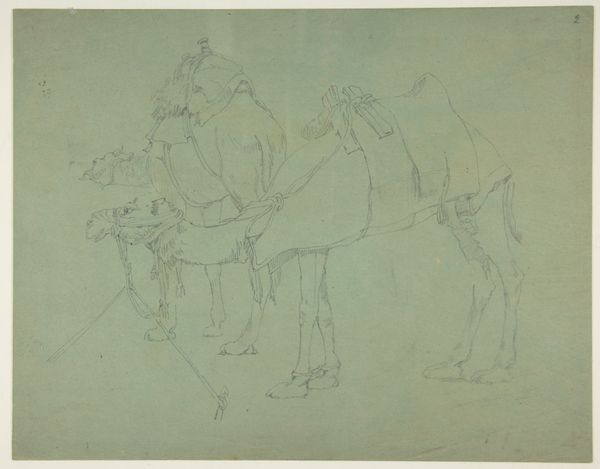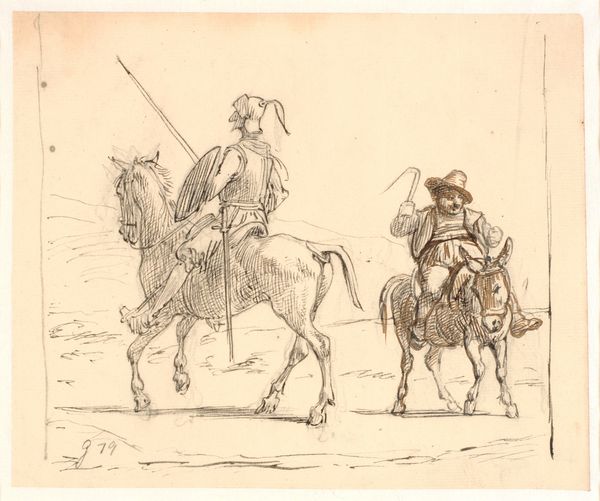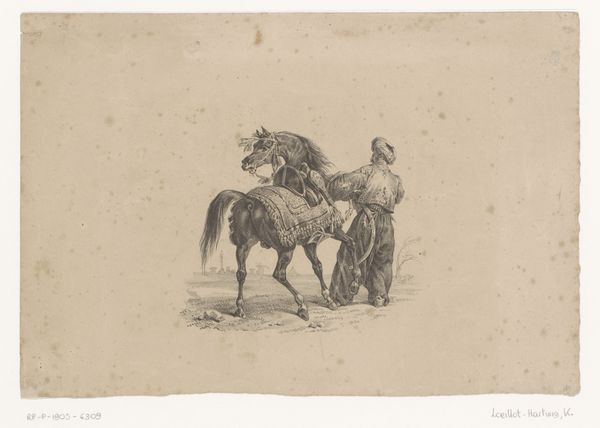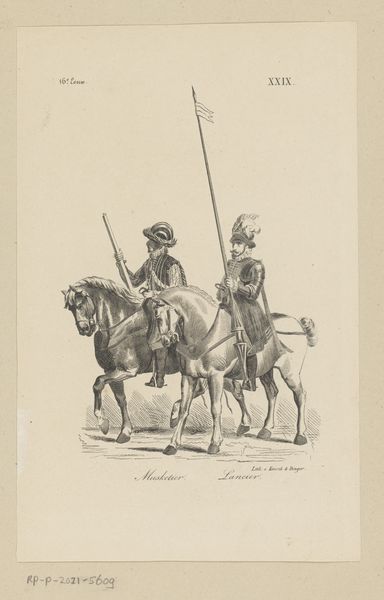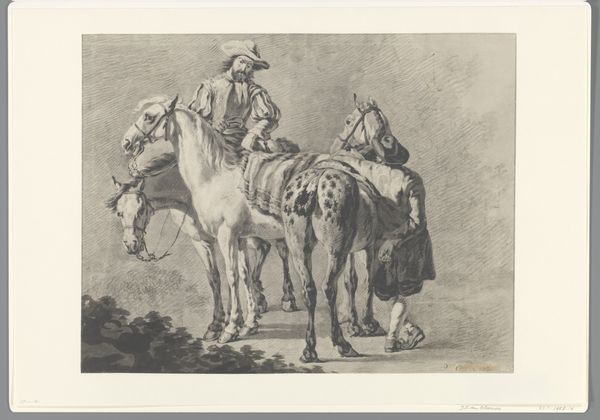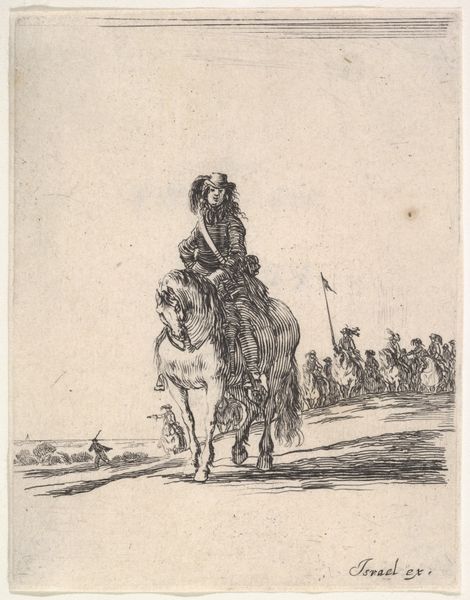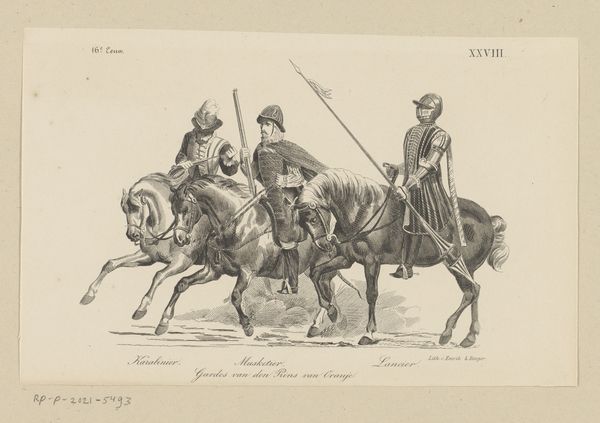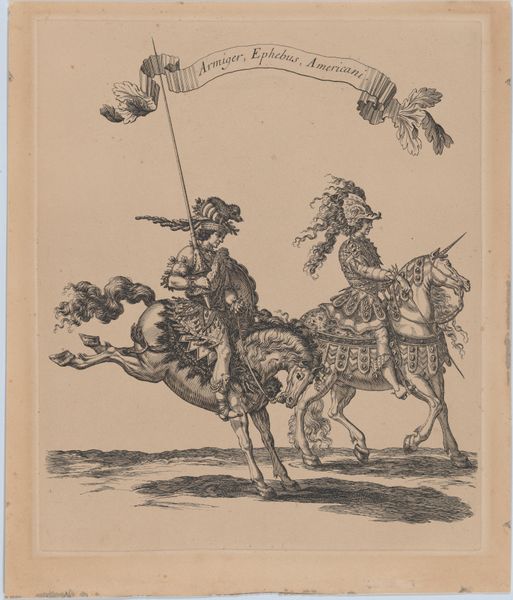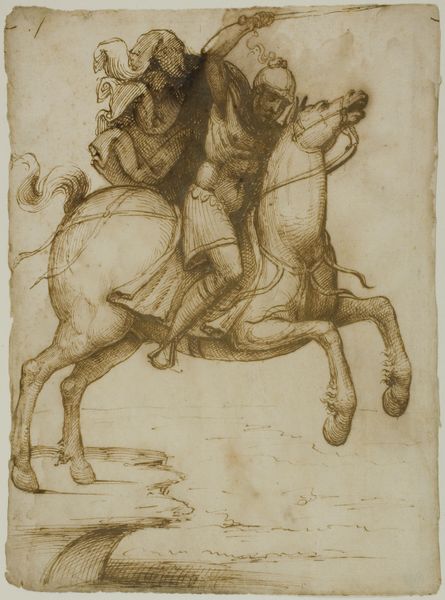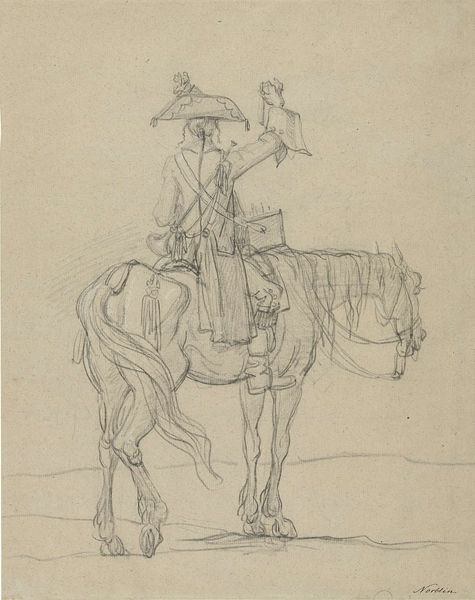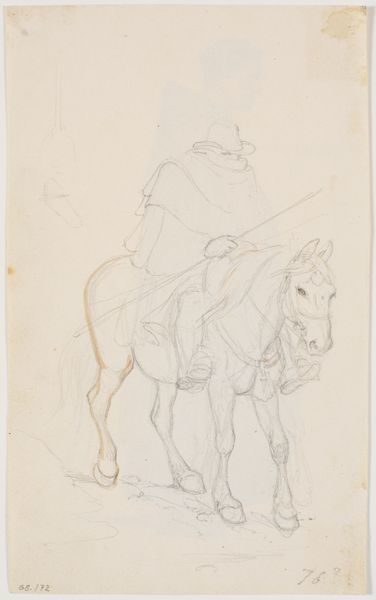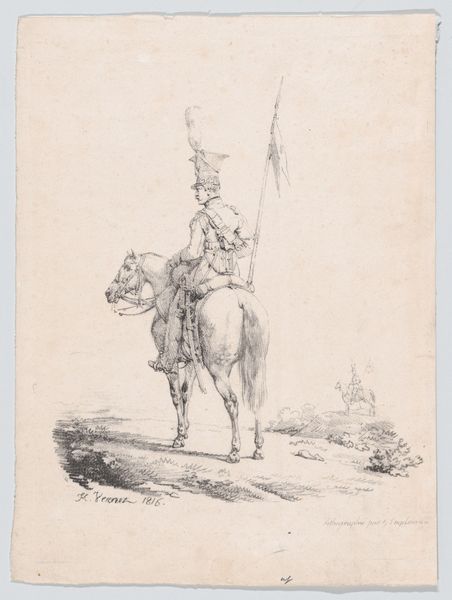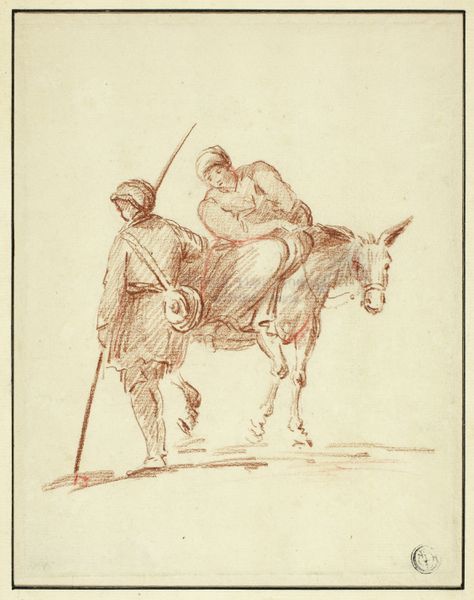
drawing
drawing
imaginative character sketch
light pencil work
quirky sketch
pencil sketch
personal sketchbook
idea generation sketch
sketchwork
pen-ink sketch
sketchbook drawing
sketchbook art
Dimensions: overall (approximate): 21.3 x 20.6 cm (8 3/8 x 8 1/8 in.)
Copyright: National Gallery of Art: CC0 1.0
Curator: Rodolphe Bresdin’s “The Camel” presents us with an intriguing tableau rendered with delicate pen and ink. What are your immediate thoughts? Editor: My first impression is of a slightly melancholic grandeur. There’s an almost dreamlike quality to the precise, almost obsessive detail of the camel itself, contrasted with the blurry, playful horses. Curator: Bresdin, working in the 19th century, was known for his idiosyncratic and often politically charged art. This drawing, although seemingly simple, reveals an orientalist perspective which warrants a look into its colonial roots. Camels, often associated with trade and travel in the Middle East and North Africa, appear here perhaps not as majestic symbols of power, but burdened and ornate objects within a Western gaze. Editor: Absolutely, but the details are striking. I’m drawn to the symbols on the camel's saddle – the circular shield-like decoration. To me, it invokes a history of ornamentation used on military equipment to evoke a specific kind of presence, perhaps intended to intimidate as well as communicate allegiance. Is it a shield or just ornamentation? I think this ambiguity plays with cultural understanding and exoticism. Curator: I appreciate how you unpack those potential cultural markers! Thinking through postcolonial frameworks, one must consider how this 'exoticism' can also serve as a subtle tool of othering and control. Bresdin’s rendering perhaps speaks to the broader political and social climate of the era when colonial powers sought to dominate and categorize diverse cultures. The seemingly insignificant detail of the two playful horses hints at other themes related to freedom and unrestrainedness which create a dichotomy. Editor: Perhaps those are signifiers about Western cultural assumptions. I tend to also interpret those frolicking horses in terms of broader allegorical symbolism, maybe as a contrast between untamed nature and cultivated culture or even as representations of an artistic freedom unrestrained by commercial appeal. The camel becomes an artistic statement about burdened servitude, loaded down not just with cargo but artistic commentary. Curator: This lens brings us closer to how artistic expressions of power were represented at that time. How does art serve both as propaganda and dissent in its representation? It's not necessarily clear what Rodolphe Bresdin intended, yet by using current methodology we are challenged to explore beyond a mere picturesque scene of a distant world, inviting conversation. Editor: I’ve never looked at “The Camel” through such politically-charged eyes. Curator: And I appreciate your ability to see and value artistic vision, historical symbols, and its cultural impacts with grace.
Comments
No comments
Be the first to comment and join the conversation on the ultimate creative platform.
